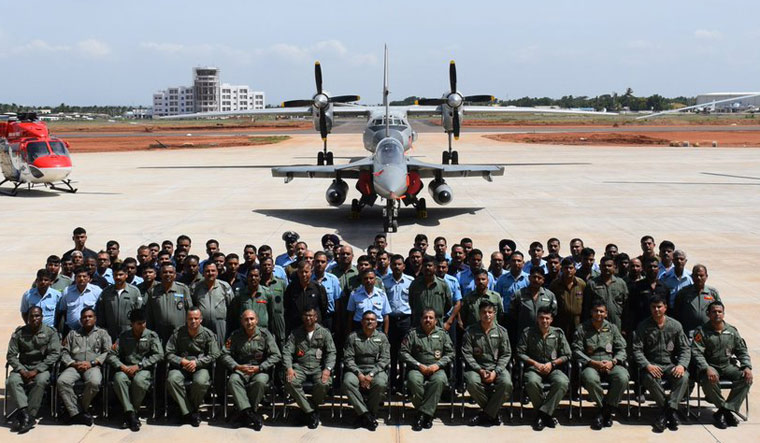Resurrected in Bengaluru on July 1, 2016, at the Aircraft and Systems Testing Establishment (ASTE) of the Indian Air Force (IAF), No 45 Squadron, the Flying Daggers, was moved to Air Force Station Sulur, near Coimbatore on July 1, 2018. The Flying Daggers squadron is special: it is the first IAF squadron to operate the indigenous Tejas fighter.
And both the Flying Daggers and the Tejas have come a long way, flourishing by leaps and bounds, every passing day.
Today, the Flying Daggers squadron proudly stands as a hallmark of indigenisation, scripting new lessons in raising, maintaining and operating the Tejas, a desi flying machine that has caught the imagination of the nation.
Air Marshal Balakrishnan Suresh, the Air Officer Commanding-in-Chief, Southern Air Command, Thiruvananthapuram, has been playing a mentor’s role to the Flying Daggers since he took over the reins of the command.
He told onmanorama that the Flying Daggers is shaping well as a squadron, ironing out all teething issues in operating the Tejas. “By March 2019, the squadron will have more [Tejas] machines to operate,” Air Marshal Suresh said.
Great flying environment
For the Flying Daggers, the move to AFS Sulur, endows a more conducive flying environment to operate the Tejas. “The Daggers, in the fair winds of Sulur, have a typical IAF environment, which is conducive for safe and sustained flying,” says an official of the air force station. He said the move of the squadron to a new location involved much more than just flying the Tejas fighters in.
“We had to physically move the entire range of ground equipment and then set up the maintenance facilities at AFS Sulur. We also had to establish the logistics support for spares and consumables to sustain unhindered operations,” he adds.
In addition, over 100 families had to move in at one go and they had to be settled at the new base in terms of housing and schooling among others.
Air Commodore A.K. Puntambekar, Air Officer Commanding (AOC), AFS Sulur, is admired by the Flying Daggers for playing a key role in accommodating the new unit.
Frequent flying
Amid settling down, the Flying Daggers had to also ensure that the squadron’s flying operations with the Tejas were not hindered at any point of time.
The team is now focusing on training more Tejas pilots in both air combat and air-to-ground roles.
The Flying Daggers squadron is hopeful that the increase in number of pilots and Tejas aircraft will enhance the operational capabilities of the squadron.
“The Tejas programme spearheads the country’s efforts to increase its self reliance, and the Flying Daggers are witnessing a moment of pride on their path to assume greater responsibilities towards safeguarding national skies,” says an official.
The Flying Daggers squadron is being commanded by Group Captain Samrath Dhankhar, a recipient of Vayu Sena Medal. The Flying Daggers moved to Sulur under his command. He is a fighter combat leader with flying experience of more than 1,600 hours.
His deputy is Wing Commander Manish Tolani, the flight commander of Flying Daggers. He is a Cat A qualified instructor and an instrument rating instructor\examiner with vast experience of over 2,200 hours on MiG-29, MiG-21 and the Hawk MK 132A.
The Flying Daggers now enjoy an envious operating environment and a modern squadron complex at AFS Sulur. Their move to the new base, with the Tejas, is a giant leap towards their re-establishment within the IAF as a formidable squadron.
-Via onmanorama



